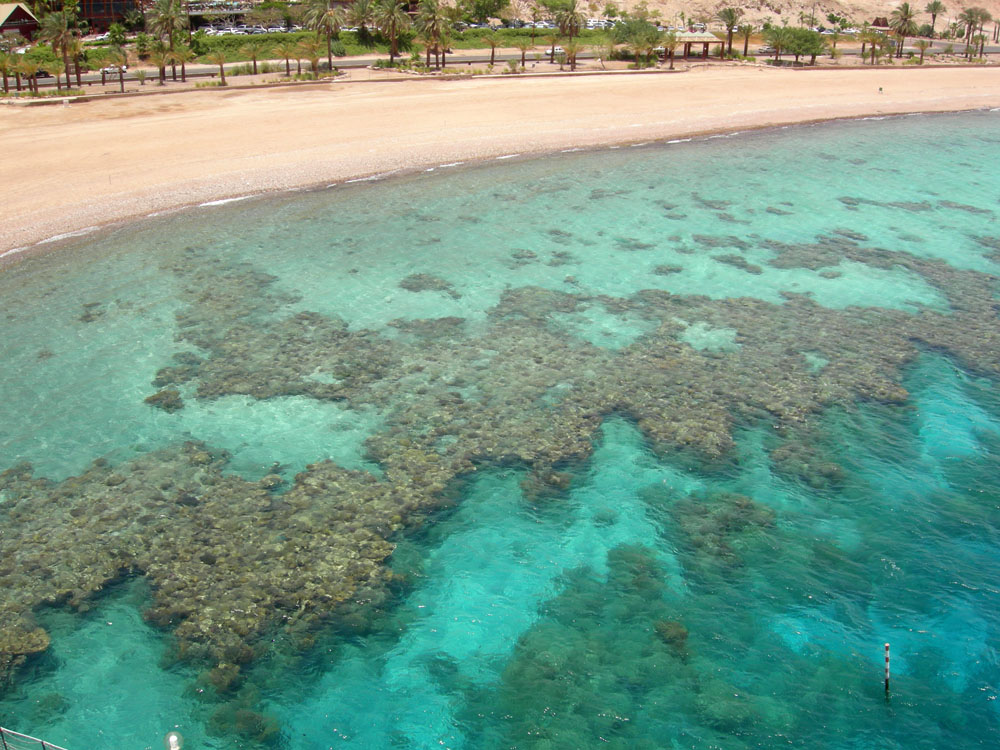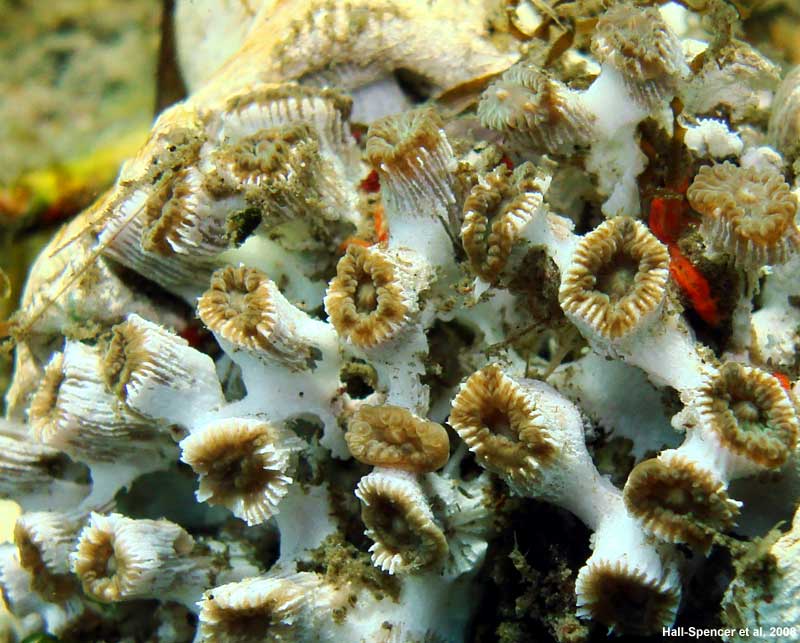However, as the NOAA state shallow water corals are only one type. There are cold water corals and deep sea corals that have limited light producing soft corals.
What are corals?
The Oxford English Dictionary defines corals as ' hard stony substance secreted by certain marine coelenterates as an external skeleton, typically forming large reefs in warm seas'.
Corals are invertebrate animals belonging to a group called the Cnidaria. They can exhibit a wide range of colours, shapes and come in all sizes. Each coral is made up of hermatypic polyps and most live in colonies. A coral colony can grow to be very large indeed. The hermatypic polyps produce calcium carbonate to form calyx (NOAA, 2011). The calcium carbonate adds to the coral skeleton forming the beginnings of the coral structure. Corals develop slowly over millions of years, today the corals you see have been growing for around 50 million years. To date there are around 800 known species of hard coral and more being discovered, just as new species of marine animals are being found in the most remote ocean locations every day.
 |
| Source. Coral forming diagram. |
Where are corals found?
Coral reefs are found throughout the oceans, from deep, cold waters to the shallow tropical waters of the Indian Ocean. Tropical reefs extend from 30 degrees North and South of the equator. However, cold corals can also be found in places closer to home such as off the West coast of Scotland and Ireland. Cold water reefs have also been found in the Mediterranean.
 |
There are various factors that cause the pattern of coral reefs throughout the world.
These include: The role of ocean temperature The effects of emersion Bathymetry Levels of sedimentation Types of Coral Reef

 Anthropogenic threats to coral reefs Corals are ecosystems that have been developing for years, and in this time have been subjected to natural change. The worry now is that with increasing human stresses, corals may not be able to cope. WWF (2010) states that already 'one quarter of coral reefs are subjected to damage beyond repair, with another two thirds under threat'. With reef building corals representing a critical component for marine biodiversity, it becomes important to conserve these ecosystems in order to conserve the species that use coral environments (Huang and Roy, 2013). Destructive fishing practices: Blast, dynamic fishing and bottom trawling are types of fishing practices that cause devastation to sensitive coral reefs. Bottom trawling has been widespreadsince the 1980s. The large rubber tires on the nets can damage the coral structures. Dynamic fishing is where explosives are set off underwater destroying coral. This has been particularly a problem in South East Asia (Cadwell and Fox, 2006). Pollution: Urban and industrial waste being released into the oceans which are poisoning the reefs. Pollutants increase the amount of nitrogen in the waters causing an overgrowth of algae, which can smother the reefs, concealing them from sunlight which the polyps need to survive (McManus, 2000). Sedimentation: Anthropogenic coastal construction, mining, logging and tourism developments can cause erosion. This erosion causes increased levels of sediment being produced. Sediment covers coral, almost suffocating it and causing the corals to produce a protective mucus (MES, 2002). This process takes incredible amounts of energy and if corals are overworked they can die. Ocean acidification: As mentioned in my previous post, marine environments are particularly threatened by climate change and the increasing pH of ocean waters. Since the beginning of the industrial revolution, the oceans have been absorbing increasing amounts of excess carbon dioxide. With ocean acidification, corals cannot absorb the calcium carbonate needed to maintain their structures and therefore the reef will dissolve (SCOR, 2009).  Ocean acidification effects on coral reefs. Global warming and coral bleaching: In the Anthropocene, global warming is a known threat to many ecosystems. It occurs because carbon dioxide and other greenhouse gases cause a blanket, preventing heat from the sun to escape, warming the atmosphere. Ocean warming is extremely devastating to coral biodiversity, which is sensitive to changes in temperature. If oceans stay warm for several weeks, zooplankton leave the corals, turning them white in the process, because it is the zooplankton that gives corals their unique colours. NOAA (2013) discussed how in 2005, the USA lost half of its coral reefs in the Caribbean in only one year due to a huge coral bleaching disaster.  Coral Bleaching: showing the distinctive white coral. However, a recent study showed it is not all bad news. Elevated nitrogen and phosphorous at a study site in Florida Keys from 2009-2012, showed coral bleaching. What this study also noted was that once the injection of pollutants ceased, the corals became able to recover and in a surprisingly short period of time (PhysOrg, 2013). There are other threats to corals, however I have rambled on too much already. I hope you enjoy this post and it provides a insight into the marine biome and the anthropogenic impacts of coral ecosystems. Being a corals fanatic, I find it extremely worrying that humans can be having such disastrous effects to one of the world's most beautiful environments. I, for one, want to be able to dive and explore these unique ecosystems, enjoy their bright colours and extraordinary patterns and it would be devastating if these environments were not there for people to enjoy. |



